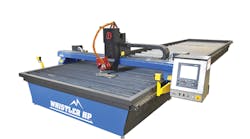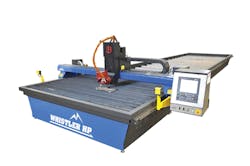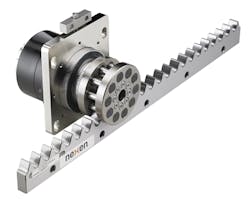A roller-pinion drive let a linear rail and runner block handle the needs of a plasma-cutting table able to slice through 1-in.-thick mild steel at 145 ipm. The design team at Pinnacle Industrial Automation, Ontario Canada, selected a roller-pinion drive from the Nexen Group, Vadnais Heights, Minn., to do the job rather than a traditional rack-and-pinion drive.
The roller-pinion drive uses bearing-supported rollers within a stability-oriented design to eliminate backlash and decrease wear on the teeth. This lets the device deliver its out-of-the-box accuracy for at least five years. The pinion rollers travel in and out of the rack rather than sliding, which reduces friction and wear. (Pinions with teeth must be replaced every 4 to 12 months because of wear and resulting loss of accuracy.) The rollers also do not need clearance like gear teeth, so backlash is zero.Once in use, the Whistler HP plasma-cutting table and its roller-pinion drive did not suffer the jams common with rack-and-pinion operations. Such jams result from a single pinion tooth pushing off one side of a rack tooth and immediately moving to the next side of the tooth. This problem is eliminated with roller pinions because the pinions simultaneously engage several tooth flanks in opposing directions. The design also allows clearance between other teeth.
The roller pinion’s low friction gives the device an unlimited run length. Lack of friction also means heat and lubrication are not issues. In most cases, the pinion only needs lubricating every 2 million revolutions, (approximately six months).


